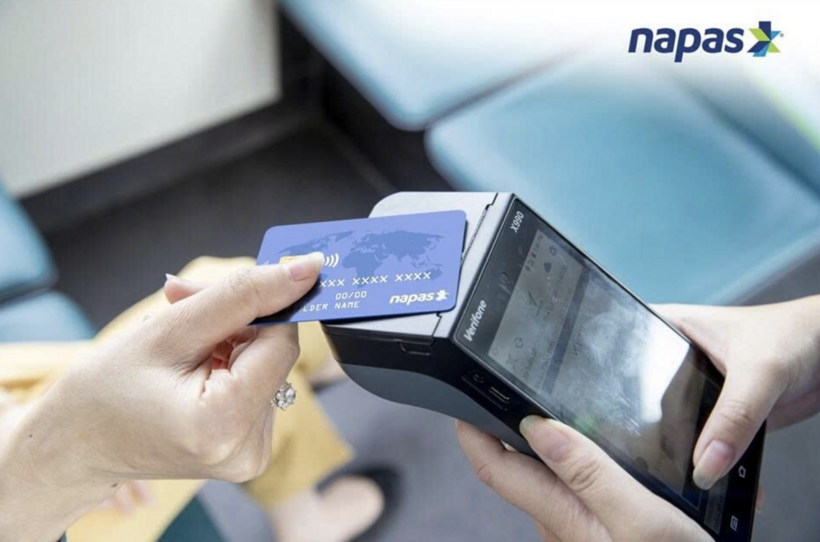
Travel trends 2026: The rise of ultra-personalised journeys
19:05 | 23/03/2025 23:18 | 12/12/2025Tourism
Cashless lifestyle on the rise
According to the State Bank of Vietnam (SBV), non-cash payment activities and digital banking services continued to post robust growth during the first three quarters of 2025, reflecting the nation’s growing appetite for modern, technology-driven financial solutions.
Compared with the same period last year, total non-cash payment transactions rose 43.32% in volume and 24.23% in value. Internet-based transactions grew 51.2% in volume and 37.17% in value, while mobile payments increased 37.37% and 21.79%, respectively. Particularly, QR code payments soared by 150.67% in value, evidence of how low-cost, convenient payment methods are quickly becoming a habit in daily life.
In contrast, ATM transactions fell 16.77% in volume and 5.74% in value, showing that cash withdrawals are steadily giving way to digital transactions. By the end of September 2025, Mobile Money accounts had exceeded 10.89 million, about 70% of which were in rural and remote areas - a testament to Vietnam’s efforts to promote financial inclusion and narrow the digital divide.
The SBV reported more than 290 million Mobile Money transactions with a total value exceeding VND 8.5 trillion, underscoring the growing scale and resilience of this channel. So far, 53 licensed intermediary payment service providers, including 49 e-wallet operators have helped diversify and strengthen Vietnam’s digital payment ecosystem.

Non-cash payments and digital banking activities continue to record strong growth. Photo: VGP
The central bank continues to urge credit institutions to speed up digital transformation and expand cooperation across sectors to build customer-centric ecosystems that deliver seamless and personalized experiences.
Many banks are also integrating advanced technologies such as artificial intelligence (AI), machine learning (ML), and big data analytics to automate operations, analyze customer behavior, and optimize services. Today, nearly all basic banking functions have been digitized, with some banks reporting up to 95% of transactions conducted through digital platforms.
Vietnam’s digital payment ecosystem is becoming increasingly interconnected - linking banks with public services, e-commerce, utilities, telecommunications, education, healthcare, and tourism. Both consumers and businesses can now pay, shop, and book services directly via familiar banking apps or e-wallets, enjoying greater convenience, safety, and efficiency.
Project 06: Data infrastructure for digital banking
Under Project 06 (Decision No. 06/QD-TTg dated January 6, 2022, by the Prime Minister on developing population data, identification, and electronic authentication applications for national digital transformation during 2022–2025, with a vision to 2030), the banking sector has made significant progress in connecting and applying the National Population Database to support socio-economic development.
Following the SBV’s implementation plan and coordination with the Ministry of Public Security, many credit institutions and payment intermediaries have been working closely with the Police Department for Administrative Management of Social Order (C06) to enhance customer verification using chip-based ID cards and the VNeID app for account opening, identification, and e-banking services.
On October 10, the banking system had verified biometric data for more than 132.4 million individual profiles and 1.4 million corporate profiles through chip-based ID cards or VNeID. The National Credit Information Center (CIC), in coordination with C06, has completed six rounds of data reconciliation and cleansing for about 57 million customer records offline.
Currently, 57 credit institutions and 39 payment intermediaries have adopted chip-based ID verification on mobile devices; 63 institutions have deployed it at transaction counters; and 32 credit institutions along with 15 intermediaries are implementing VNeID verification, 19 of which have gone live. Additionally, 28 banks and 4 intermediaries have linked social security accounts with bank accounts through VNeID for digital payments.
Nine credit institutions are also exploring the integration of C06’s credit scoring service a crucial step toward building a transparent, reliable identity and credit data ecosystem. This will form the foundation for sustainable and inclusive digital banking growth in the years ahead.
According to the report, in the first nine months of 2025, transactions through the interbank electronic payment system rose 4.56% in volume and 46.87% in value, while those processed via the financial switching and electronic clearing system grew 19.14% in volume and 5.87% in value.

19:05 | 23/03/2025 23:18 | 12/12/2025Tourism

19:05 | 23/03/2025 23:04 | 12/12/2025Trade

19:05 | 23/03/2025 23:00 | 12/12/2025Society

19:05 | 23/03/2025 19:39 | 12/12/2025Trade

19:05 | 23/03/2025 19:37 | 12/12/2025News and Events